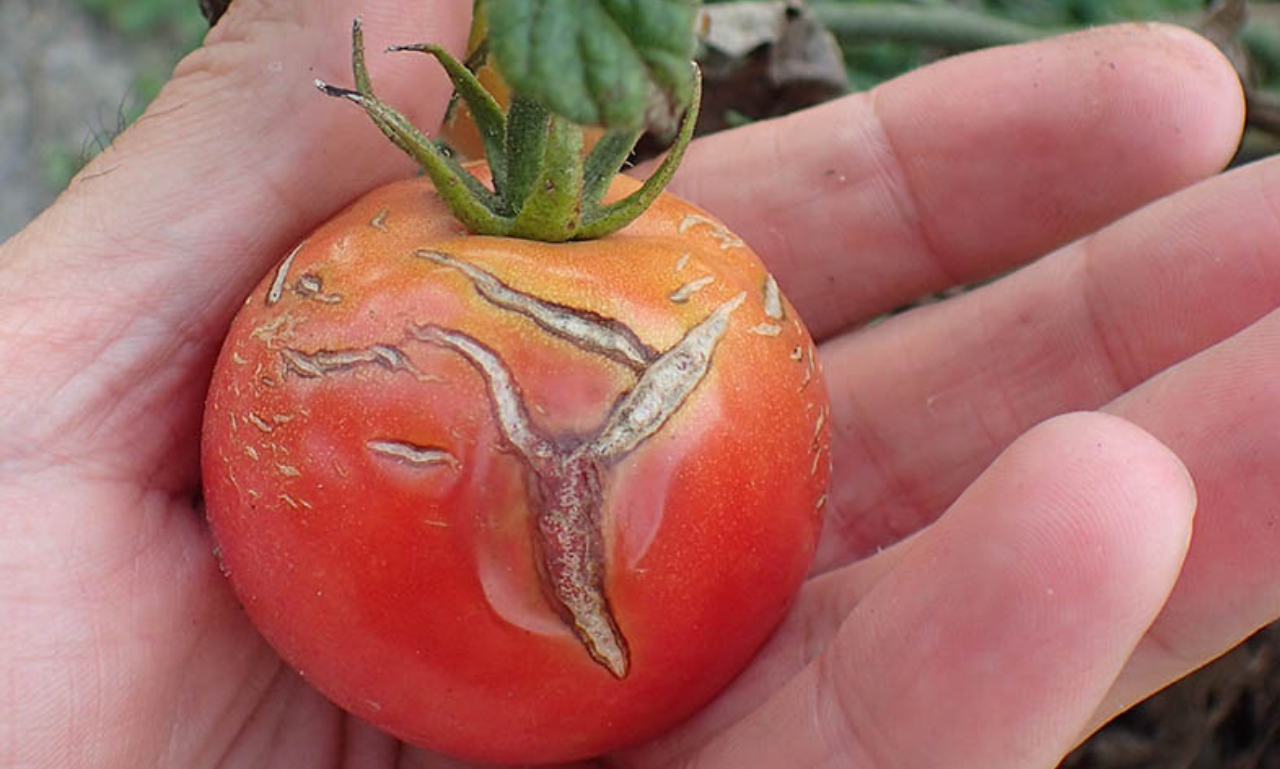The vibrant and versatile tomato, a staple ingredient in countless dishes, often graces our tables in a variety of shapes and colors. However, as any gardener or avid cook knows, tomatoes are not immune to imperfections. One common issue that tomato enthusiasts encounter is the phenomenon of tomato cracking. Whether you’re a seasoned gardener, a culinary aficionado, or simply someone who appreciates a good tomato, understanding the causes, types, edibility, prevention, and creative uses of cracked tomatoes can elevate your tomato game to a whole new level.
Causes of Cracking
Tomato cracking, scientifically known as “fruit cracking,” occurs due to the interplay of water and the tomato’s skin elasticity. Uneven watering, especially when dry spells are followed by heavy rain or excessive irrigation, is a prime contributor to this phenomenon. When the skin of a tomato cannot stretch sufficiently to accommodate the sudden influx of fluids caused by irregular watering patterns, it gives rise to those familiar cracks.
The Two Faces of Cracking
There are two primary types of cracks that can afflict your cherished tomatoes: concentric cracks and radial cracks. Concentric cracks form in a circular pattern around the point where the tomato attaches to the stem. These cracks often possess a remarkable self-healing ability, closing up and creating a visually distinctive “stitched” appearance.
On the other hand, radial cracks are more severe, originating at the stem and extending downward along the sides of the tomato. These deeper fissures can leave the tomato vulnerable to various issues, including fungal growth, bacterial infection, and insect infestations.
To Eat or Not to Eat: The Edibility Conundrum
The question of whether to salvage and consume a cracked tomato largely hinges on the severity of the cracking. Minor concentric cracks, with their propensity to self-heal, are generally safe to eat. However, it’s essential to be vigilant, as cracked tomatoes can attract unwanted visitors like fruit flies and can develop mold, fungus, and bacteria inside the crevices.
The good news is that the edible parts of cracked tomatoes can still be put to excellent use in your culinary endeavors. Whether you’re crafting a refreshing summer salad, constructing a hearty sandwich, whipping up a zesty salsa, or concocting a flavorful tomato-based sauce, the taste and quality of the non-cracked portions remain uncompromised.

Nurturing Your Tomatoes and Preventing Cracking
A little proactive care can go a long way in preventing the dreaded tomato cracks. Regular and consistent watering is your ally in this endeavor. Aim to water at the soil level, especially if you’re tending to container-grown plants. Keeping an eye on local precipitation rates can help you adjust your watering schedule accordingly.
For those employing irrigation systems, consider employing drip irrigation or sprinkler timers. These tools help maintain a steady hydration level, reducing the risk of sudden fluctuations that can lead to cracking.
The Dance of Ripening and Cracking
Timing is crucial when dealing with cracking tomatoes that are nearing ripeness. If you spot a tomato on the brink of cracking and approaching maturity, it’s advisable to pluck it from the vine. Allowing it to continue ripening indoors on a windowsill or countertop can help mitigate the cracking issue. Leaving it attached to the plant could exacerbate the situation, as the tomato continues to absorb water, potentially widening the cracks.
Transforming Imperfection into Culinary Creativity
While cracked tomatoes may not present the flawless appearance that we often associate with the ideal tomato, their culinary potential remains vast and exciting. When faced with split tomatoes, consider embracing your inner chef and transforming them into delectable creations.
Cooking damaged tomatoes can be a safe and flavorful alternative to consuming them fresh. The heat of the kitchen can work wonders, breaking down the fruit’s structure and melding flavors. Imagine homemade pasta sauce simmered to perfection, a rich and savory tomato-based soup, tangy ketchup that adds a punch to your favorite dishes, or even a sweet and luscious tomato jam that elevates your breakfast spread.
Incorporating cracked tomatoes into your culinary repertoire not only showcases your resourcefulness but also reduces food waste, aligning with sustainable cooking practices.
In conclusion, the story of cracked tomatoes is not one of despair but rather an opportunity for learning, creativity, and adaptation. By understanding the causes of cracking, embracing the different types, gauging edibility, implementing preventive measures, and exploring inventive culinary applications, you can transform what might have been discarded into a canvas for culinary expression. So, the next time you encounter a cracked tomato, remember that beneath its imperfect surface lies a world of flavorful possibilities waiting to be explored.


